11.04 T-Lymphocytes (T cells)
Types of Lymphocytes
- Lymphocytes are a type of white blood cell essential for the adaptive immune response.
- They are smaller than phagocytes and characterized by a large nucleus.
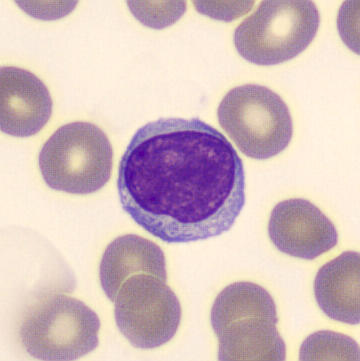
Main Types of Lymphocytes
- B-Lymphocytes (B Cells)
- Maturation: Mature in the bone marrow.
- Location: Primarily found in lymph nodes and the spleen.
- Function: Each B cell is specific to a single antigen and can produce one type of antibody. They are crucial for humoral immunity, which involves antibody-mediated responses.
- T-Lymphocytes (T Cells)
- Maturation: Produced in the bone marrow and mature in the thymus gland, which is active until puberty and then gradually shrinks.
- Function: Involved in cell-mediated immunity, with roles including directly destroying infected cells and coordinating the overall immune response.
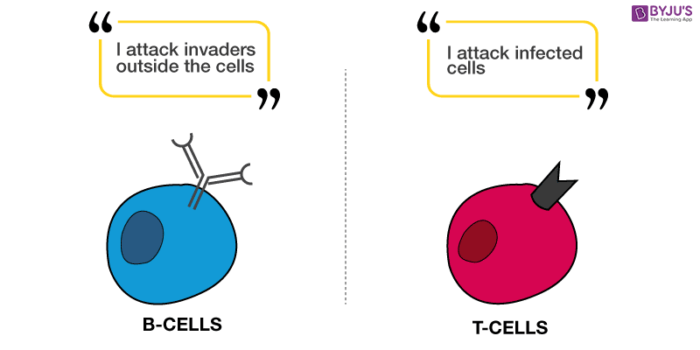
T-Lymphocytes Detailed Overview
Origin and Development
- Production: Originate in the bone marrow.
- Maturation: Complete their development in the thymus.
T-Cell Receptors
- Structure: Similar to antibodies with specificity for antigens.
- Specificity: Each T-Cell Receptors are unique to a specific antigen, ensuring targeted immune responses.
Antigen Presentation
- Process: T cells recognize antigens presented on the surface of host cells (e.g., macrophages, infected cells) via Major Histocompatibility Complex (MHC) molecules.
- Activation: Recognition of antigens on host cells activates T cells to initiate appropriate immune responses.
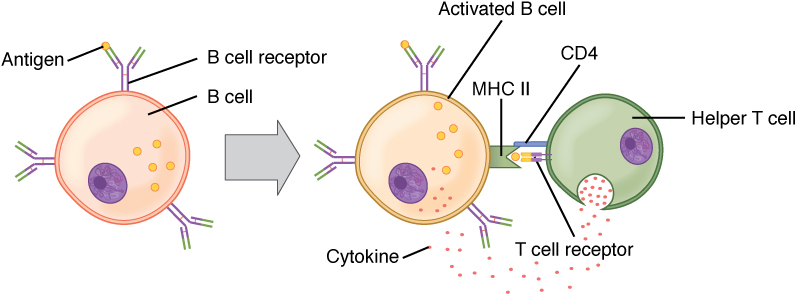
Types of T-Lymphocytes
- T-Helper Cells (CD4⁺ T Cells)
- Function:
- Release cytokines to coordinate the immune response.
- Stimulate B cells to proliferate and differentiate into plasma and memory cells.
- Enhance phagocytosis by macrophages.
- Role: Act as regulators, ensuring that other immune cells respond effectively.
- Function:
- T-Killer Cells (Cytotoxic T Cells or CD8⁺ T Cells)
- Function:
- Identify and destroy infected or malignant cells presenting foreign antigens.
- Induce apoptosis in target cells by releasing toxic substances such as perforins and granzymes.
- Mechanism: Attach to infected cells, form pores in their membranes, and release enzymes that lead to cell death, eliminating pathogens within.
- Function:
Key Processes Involving T Cells
- Clonal Selection and Clonal Expansion
- Clonal Selection: Only T cells with receptors specific to an encountered antigen are activated.
- Clonal Expansion: Activated T cells proliferate through mitosis, increasing the number of cells available to fight the antigen.
- Memory Cells Formation
- Memory T-Helper and T-Killer Cells: Persist after the initial infection has been cleared, enabling a faster and more robust response upon subsequent exposures to the same antigen.
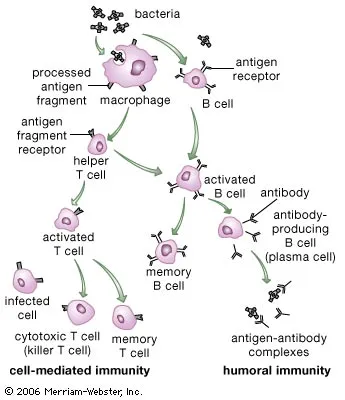
Key Terms
- Antigen Presentation: The display of antigen fragments on the surface of host cells via MHC molecules to alert and activate T cells.
- Cytokines: Signaling proteins released by T-helper cells that modulate the activity of other immune cells, including B cells, macrophages, and cytotoxic T cells.
T-Lymphocyte Response Process
- Antigen Recognition
- T-helper and T-killer cells bind to specific antigens presented on infected cells or antigen-presenting cells like macrophages.
- Cytokine Release
- T-Helper Cells:
- Release cytokines to stimulate B cell proliferation and differentiation into plasma and memory cells.
- Promote the division and activation of cytotoxic T cells.
- Effect: Enhances the overall immune response by activating various immune cell types.
- T-Helper Cells:
- Killing Infected Cells
- Cytotoxic T Cells:
- Attach to infected cells.
- Release toxins (e.g., perforins and granzymes) that create pores in the target cell membrane, leading to cell death and elimination of intracellular pathogens.
- Cytotoxic T Cells:
- Formation of Memory Cells
- Both T-helper and T-killer cells generate memory cells that remain in the body, ensuring a swift and effective response upon re-exposure to the same antigen.
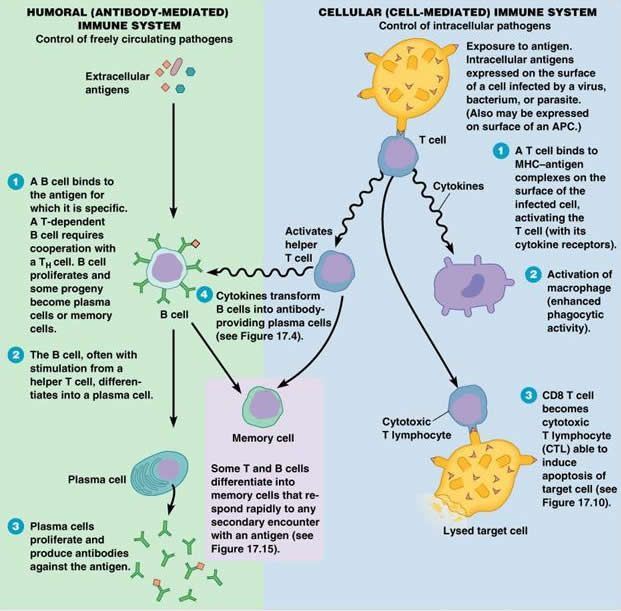
Examples of Pathogen Responses
Corynebacterium diphtheriae Toxin Release
- Response: T-helper cells signal B cells to produce specific antibodies that neutralize the diphtheria toxin.
Measles Virus Invasion
- Response:
- T-Killer Cells: Target and destroy virus-infected cells in the respiratory tract.
- T-Helper Cells: Coordinate the production of antibodies by B cells to neutralize the virus.
Multiple Colds (Rhinovirus Infections)
- Challenge: Numerous rhinovirus strains present different antigens.
- Response: Each strain requires a separate primary immune response, leading to repeated infections as memory cells are specific to each antigen.